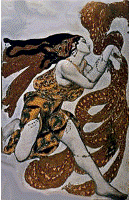
Welcome To Symbol of
the Week
Each week Electricka explores a symbol that represents
an abstract or concrete object.
|
|
—tip— electricka says...
A symbol is a device of great power: employ it wisely; heed it cautiously.
|
This week's Symbol
—about this feature: click here—
about this feature
At this feature you can explore what symbols reveal about the nature and history of mankind.
Each week Electricka explores a symbol that represents an abstract or
concrete object. The object that the symbol represents may be abstract or
concrete. For both the symbol and the object represented by the symbol, she
attempts to present the symbol's meaning and significance, to recount its
cultural and historical background, and to offer other pertinent facts and
ideas, as
relevant.
Symbol Of The Week write-ups are contributed by Electricka's visitors and
by ETAF Staff.
The number of abstract and physical symbols and symbol systems devised by
society throughout the millennia is vast. Electricka has no hope of being
able to present even a small fraction of them in this feature, or even a
sizeable fraction of the symbols that are still in circulation. But
she'll try.
More
Publish your own symbol of the week feature here
Electricka invites you to
submit your own Symbol Of The Week for publication here. So long as
it's compatible with Electricka's guidelines, it doesn't
matter whether it's been published before or whether you write it especially
for this feature.
- Find out how to submit your Symbol Of The Week for publication here. Consult Electricka's
Guideline For ByLine Item Contributors—Symbol Of The
Week:
click here.
To encourage you to write and submit your own original
Symbol, The Muse has declared Symbol of the Week a ByLine feature.
- For more information about this and other ByLine Features, visit
the ByLine page at this web site:
click here.
About the two features: Symbol of the Week and Graphic symbol of the day
You are now visiting an feature sponsored by Electricka called Symbol Of
The Week. Another feature called Graphic Symbol Of The Day is a related but
distinctly different feature that is sponsored by The Muse Of Fine Art. Do
not confuse the two features.
More





